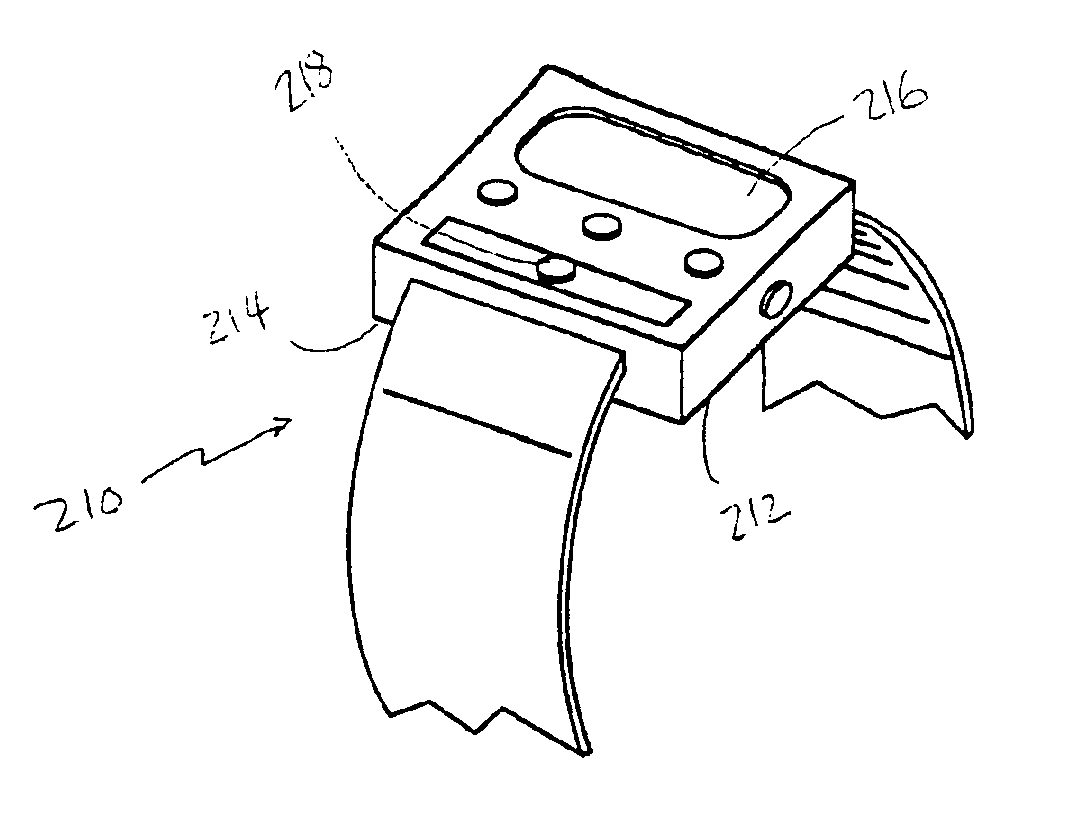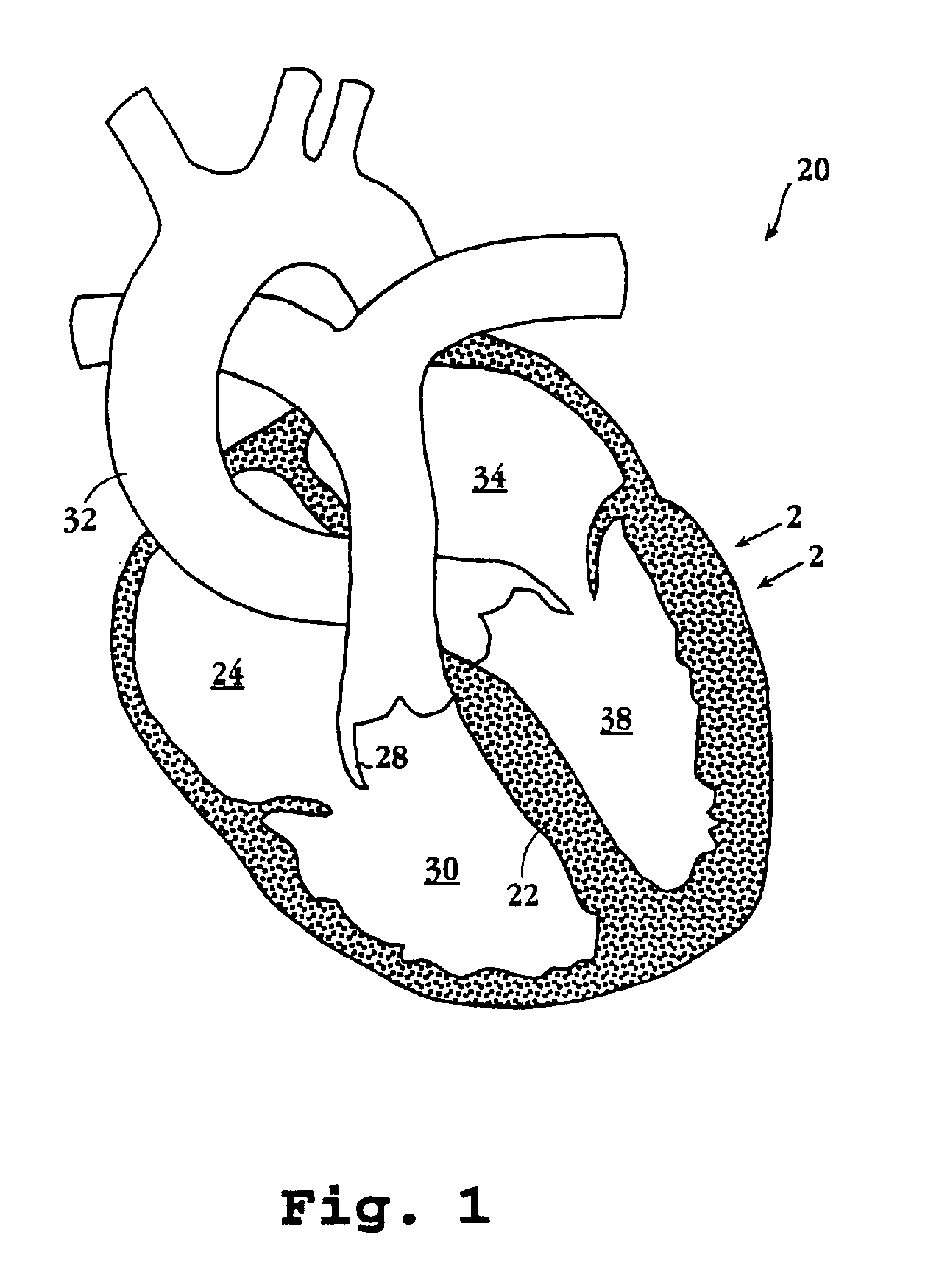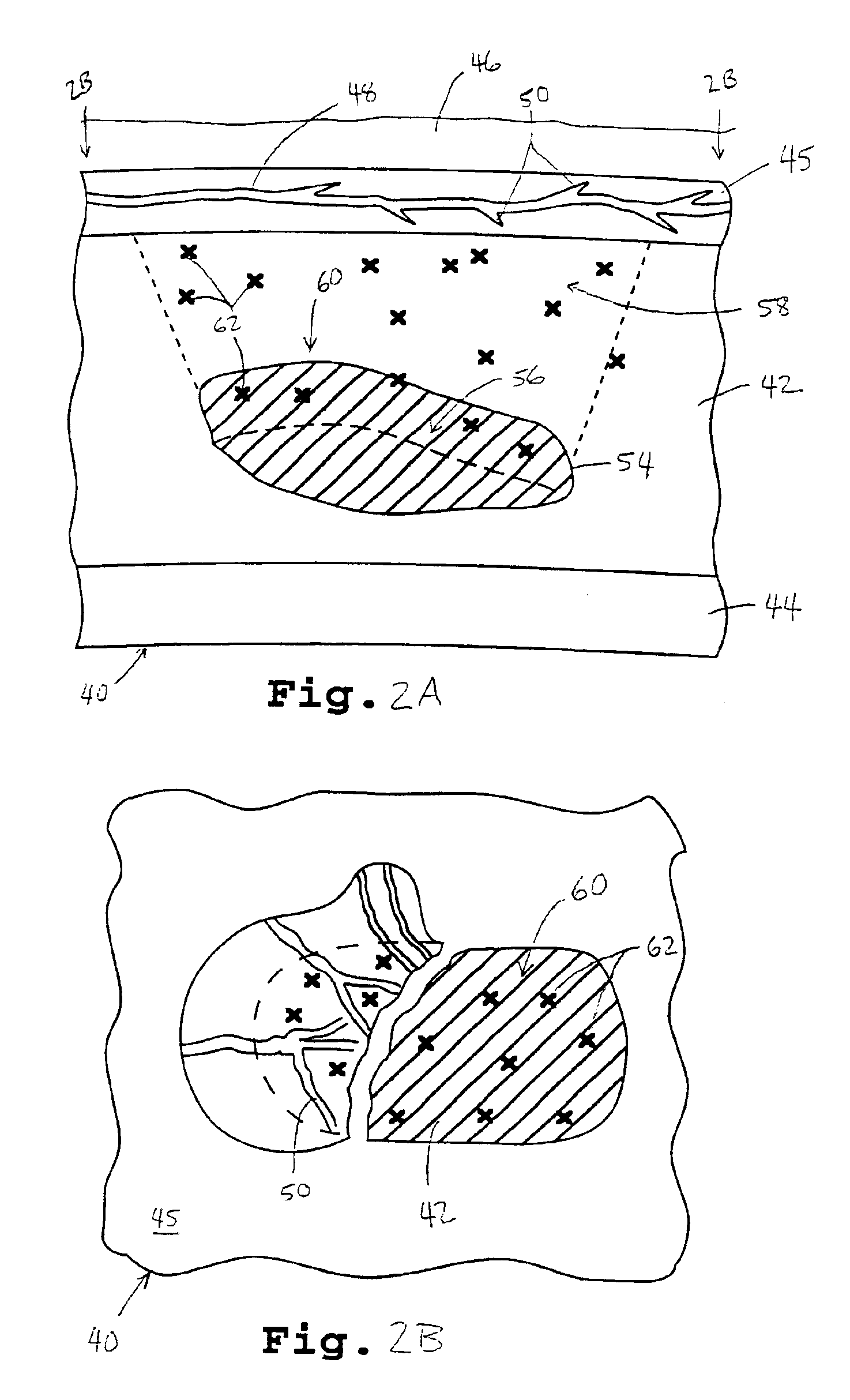Method and monitor for enhancing angiogenesis in the heart by exercise follow-up
a follow-up and angiogenesis technology, applied in the field of monitoring and monitoring of angiogenesis in the heart, can solve the problems of cardiologist or surgeon being at risk, and achieve the effects of stimulating angiogenesis, and reducing the accumulation of blood clot material
- Summary
- Abstract
- Description
- Claims
- Application Information
AI Technical Summary
Problems solved by technology
Method used
Image
Examples
Embodiment Construction
1. Treatment Method
[0033]FIG. 1 is a simplified view of a human heart 20. The interior of the heart is divided into right and left halves by a thick central muscular wall 22 known as a septum. On the right side, the upper chamber is known as the right atrium, indicated at 24. Deoxygenated blood from the rest of the body arrives in the right atrium via the vena cava, and is pumped across a one-way valve 28 known as the tricuspid valve into the lower right chamber known as the right ventricle, indicated at 30. From there the blood circulates to the lungs through the pulmonary valve via the pulmonary artery where it is oxygenated by circulation through the alveoli of the lungs (not shown). The blood returns via the pulmonary veins to the left atrium, shown at 34 and flows through a second valve, known as the mitral valve, into the left ventricle, indicated at 38, where it is pumped via the aorta 32 to the rest of the body.
[0034]With reference to FIGS. 2A and 2B, which show a wall porti...
PUM
 Login to View More
Login to View More Abstract
Description
Claims
Application Information
 Login to View More
Login to View More - R&D
- Intellectual Property
- Life Sciences
- Materials
- Tech Scout
- Unparalleled Data Quality
- Higher Quality Content
- 60% Fewer Hallucinations
Browse by: Latest US Patents, China's latest patents, Technical Efficacy Thesaurus, Application Domain, Technology Topic, Popular Technical Reports.
© 2025 PatSnap. All rights reserved.Legal|Privacy policy|Modern Slavery Act Transparency Statement|Sitemap|About US| Contact US: help@patsnap.com



